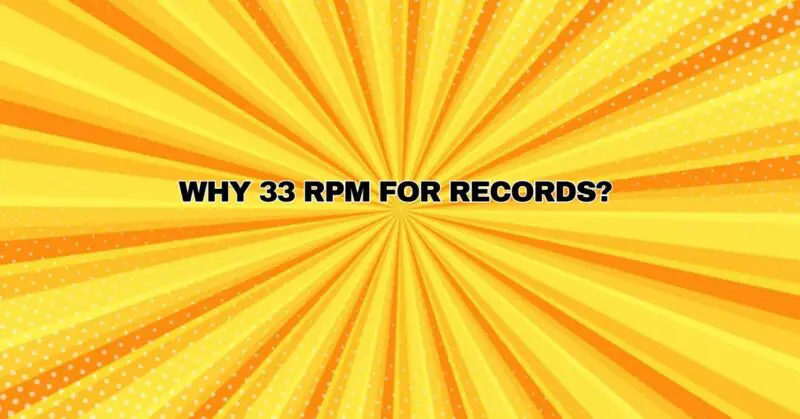Vinyl records have a rich history dating back to the late 19th century when Thomas Edison introduced the concept of recording sound on grooved discs. Since then, various aspects of vinyl records have evolved, including their size, materials, and, notably, their playback speed. Among the various speeds at which vinyl records can spin, 33 1/3 RPM (revolutions per minute) stands out as the most common speed for full-length albums. In this comprehensive article, we will explore the origins and significance of 33 1/3 RPM and how it became the standard speed for vinyl records.
Early Challenges of Playback Speed
In the early days of recorded sound, there was no standardized playback speed for records. Early shellac records, for instance, were typically played at speeds ranging from 60 to 120 RPM. This lack of standardization posed significant challenges for the nascent recording industry.
Listeners encountered difficulties in playing records on various machines, leading to inconsistencies in sound quality and pitch. Musicians, in particular, were frustrated by the lack of uniformity, as their recorded performances often sounded different from what they intended.
The Birth of 33 1/3 RPM
The quest for a standardized playback speed took a significant step forward in the late 1920s and early 1930s. During this period, the recording industry, led by RCA Victor and Columbia Records, embarked on a collaborative effort to address the playback speed issue.
In 1925, Charles Kellogg, an engineer at RCA Victor, proposed the concept of using a 33 1/3 RPM speed for long-playing records. This speed was chosen for several reasons:
- Playback Time: At 33 1/3 RPM, a 12-inch disc could accommodate up to 23 minutes of music per side. This extended playback time made it possible to fit an entire symphony or a long-format recording on a single disc.
- Sound Quality: Slower playback speeds allowed for finer and more detailed grooves, resulting in improved sound quality and fidelity.
- Record Size: The 12-inch diameter was chosen as the standard size for long-playing records, offering a balance between playtime and durability.
The Introduction of the “Long-Playing” Record
The collaborative efforts of RCA Victor and Columbia Records culminated in the introduction of the “Long-Playing” (LP) record format in 1948. These LPs, often referred to as 33s, were typically made of vinyl and played at 33 1/3 RPM. They revolutionized the music industry by providing a standardized format for full-length albums.
The LP format quickly gained popularity due to its extended playtime and improved sound quality. It allowed artists and composers to present their work in a cohesive and immersive manner, giving rise to the concept of the album as an art form.
The Legacy of 33 1/3 RPM
The introduction of the 33 1/3 RPM speed for records marked a pivotal moment in the history of recorded music. It not only standardized playback speed but also shaped the way music was consumed and appreciated. LPs became the primary format for albums, setting the stage for decades of musical exploration and enjoyment.
Even in the digital age, vinyl records played at 33 1/3 RPM continue to hold a special place in the hearts of audiophiles and music enthusiasts. They offer a unique analog warmth and immersive listening experience that harks back to the golden era of music.
Conclusion: A Speed That Defined an Era
The choice of 33 1/3 RPM for long-playing records was a transformative moment in the history of recorded music. It provided a standardized and immersive format for albums, allowing artists to showcase their work in its entirety. Today, the legacy of 33 1/3 RPM lives on, reminding us of the enduring charm and significance of vinyl records in an ever-evolving musical landscape.


